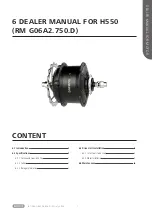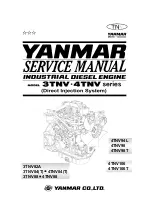
Marine Installation Manual
2021-08
4-92
4 Ancillary Systems
4.9 Exhaust gas system
X72DF
4.9
Exhaust gas system
The drawings relevant for the exhaust system (DG 9726) are provided on the
WinGD webpage under the following link:
Explosion relief devices
An explosion relief device, examined and certified by the maker, with flameless
pressure relief (rupture discs outside of the engine room or self-closing, spring
loaded valves) must be selected and installed within the exhaust system in ac
-
cordance with class requirements. The position and number of explosion relief
devices must be determined by the system designer or the shipyard through cal
-
culation.
When a rupture disc is installed outside of the engine room, preventative meas
-
ures must be taken to ensure that exhaust gas does not continuously flow to the
outside after rupture. This can be achieved with an exhaust gas duct leading to
the open deck, or in the case of a twin-engine installation by sending a control
signal that triggers a shutdown of the engine.
If either of these options are not possible, a self-closing, spring loaded valve must
be used. This would remove the peak pressure of an explosion, while ensuring
that the exhaust gas does not continuously flow outside.
Flow velocities
For an optimised exhaust gas system the following velocities are recommended
for pipes A, B and C shown in
:
Pipe A ....... = 40 m/s
Pipe B ....... = 25 m/s
Pipe C ....... = 35 m/s
For the pipe diameters please refer to the
application.
Figure 4
-
51 Determination of exhaust pipe diameter
d
B
d
A
d
A
d
A
d
A
d
A
*1) d
SM-0109
d
C
The purpose for this by-pass is to allow
engine operation after a turbocharger failure.
During normal operation it is blinded off.
The by-pass can be omitted if agreed with
WKHFODVVL¿FDWLRQVRFLHW\DQGWKHRZQHU
*1)
Blinded port
Open port
7RVXLWSLSHÀDQJH
Approx. 10 mm thick
*2)
7KHÀDQJHFRQQHFWLRQRIWKHFRPSHQVDWRU
can be designed as shown.
*2)
















































